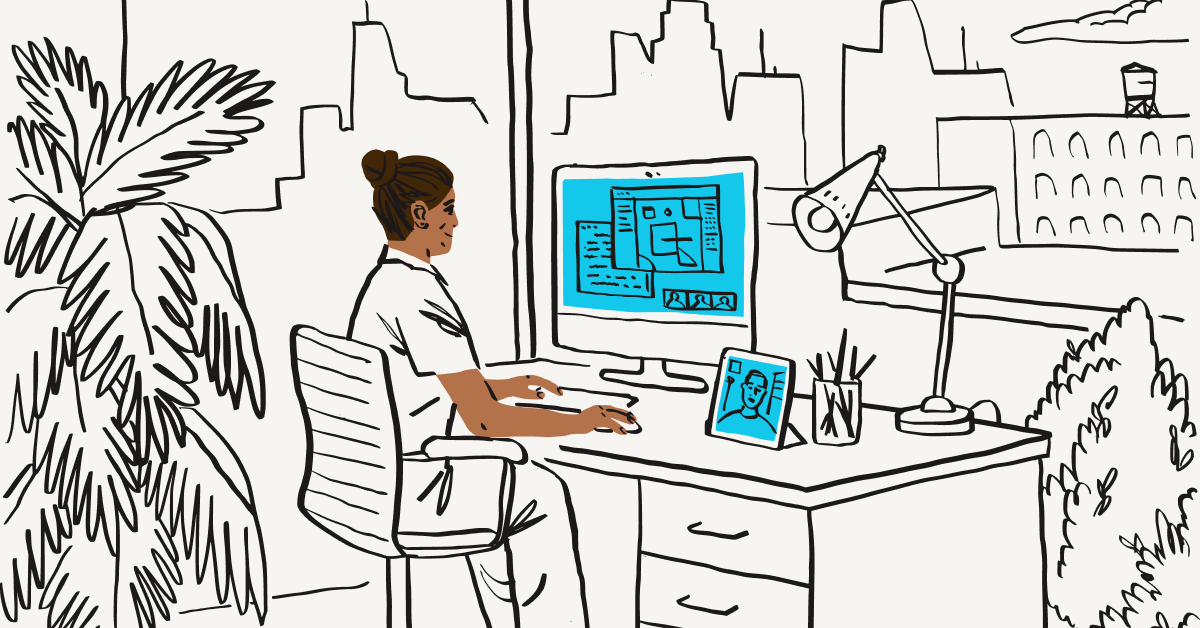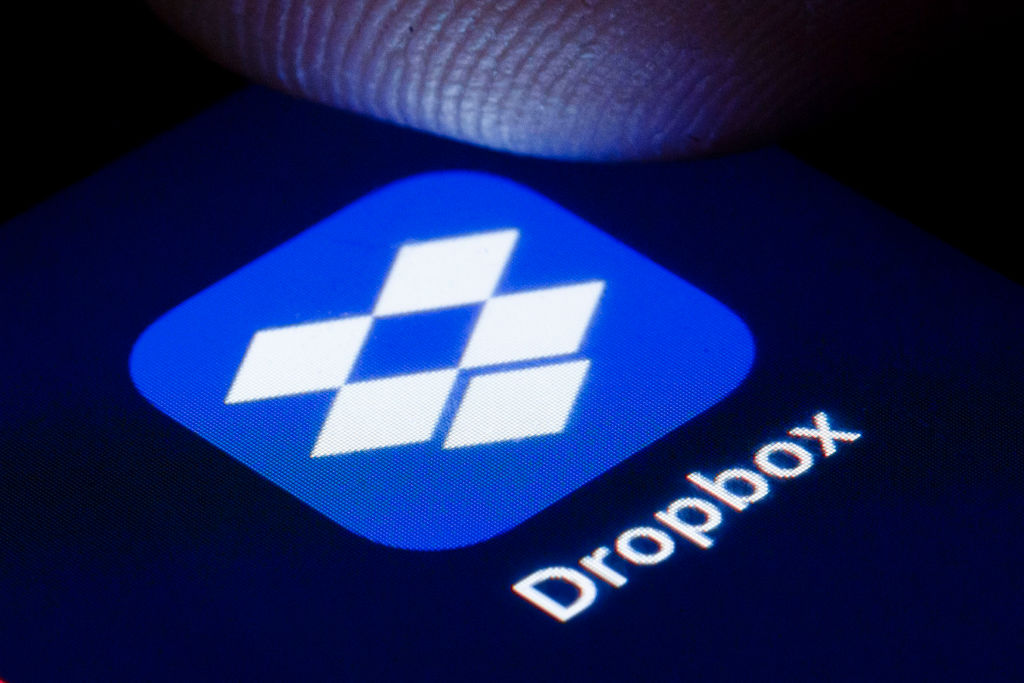- Bold Efforts
- Posts
- ✨ Virtual First: Shaping the Future of Work in Real Time
✨ Virtual First: Shaping the Future of Work in Real Time
When work takes place online, location becomes irrelevant. Because the future of work does not (and should not) care where you work.
Hi everyone! 👋
Welcome back to Bold Efforts! In today's issue, we delve into the transformative virtual-first work model: a cutting-edge but often overlooked approach reshaping modern workplaces.
Picture a workplace where your home office is as valid as any corporate headquarters. Where collaboration spans continents seamlessly, and your most productive hours dictate your schedule; not the other way around. This isn't a futurist's fantasy; it's the bold reality Dropbox has engineered with its groundbreaking 'Virtual-First' model.
In a world where companies debate the merits of remote versus in-office work, Dropbox isn't just participating in the conversation; it's rewriting the rules entirely. This is the story of how one tech innovator is fundamentally reshaping the landscape of work, challenging traditional notions of productivity, collaboration, and what it means to 'go to the office' in the digital age.
As I continue to refine this newsletter, you might see some changes in design, layout, length, and more. I will continue to experiment and perfect it until we get it just right. Thanks for your patience and for being a part of this journey— you’re awesome! 🤗
Let’s get started.

Top reads this week
Curated news, articles, and opinion-pieces about the future of work and living just for you.
A. Office rents in the Beijing’s business district have declined by 20-30% in a year. [South China Morning Post]
A similar trend is emerging across the US, Europe, and Australia. Check out the previous issue of Bold Efforts for more insights on rise in office vacancies.
B. Remote-capable, on-site employees have experienced the largest drop in engagement since 2020. [Gallup’s Hybrid Work Indicators Report]
Half of full-time U.S. employees have jobs that can be done remotely, and 60% would seriously consider leaving if remote flexibility isn’t offered. Let the talent wars begin!

C. 3 Bold Predictions for the Real Future of Virtual Work [Toptal]
Dependency on Office Culture Will Dwindle — and That’s a Good Thing
Hybrid Will Be the Worst of Both Worlds
Time on the Job Will Lose Significance
We align with these data-driven trends highlighted by Toptal and Chris Herd from Firstbase. In fact, we covered these insights in our very first issue of Bold Efforts.
Liking what you're reading? Stay informed with unique insights on the future of work and living. Subscribe to the Bold Efforts newsletter to get these thoughts in your inbox every Thursday.
Virtual First work model: Shaping the Future of Work Today
Since its founding in 2007 by Drew Houston and Arash Ferdowsi, Dropbox has revolutionized file storage and sharing with platform-agnostic cloud solutions. Today, it empowers millions of users worldwide with innovative tools and technologies, including its groundbreaking 'Virtual-First' work model.
In 2020, Dropbox initiated a groundbreaking shift with its "Virtual-First" work model, a move that has proven successful and continues to evolve. This model empowers employees to work remotely at least 90% of the time, offering unparalleled flexibility. The Virtual-First approach emphasizes flexibility with occasional in-person collaboration, ensuring that employees have the freedom to work in environments that suit them best.
Dropbox's journey to the Virtual-First model was not an overnight decision. In 2020, extensive research highlighted key pitfalls of hybrid work models, including:
Unequal Employee Experiences: Hybrid models often foster cliques.
Inclusion Challenges: Traditional setups hinder career growth and inclusivity.
“What we discovered in talking with other companies is that you end up having issues arising with inclusion, promotion, career growth, cliques, and different norms forming within different teams. That, for us, was very much a red line issue."
In response, Dropbox designed a model that aligns with its mission of creating a more enlightened way of working. The Virtual-First model emerged as a solution, enabling employees to work remotely by default while addressing the limitations of traditional and hybrid work setups.
The firm has also laid out a Virtual first Manifesto on its website which lists 5 principles they use to guide themselves in virtual work:
🪴 Everything is a prototype
⚡️ Go async by default
👩❤️👨 Make (virtual) work human
✨ Keep it simple
😇 Design for joy
Virtual-First in Action: How It Works
Remote by Default
Remote work is the standard for Dropbox employees, regardless of department. This flexibility, a cornerstone of the Virtual-First model, empowers employees to tailor their work environment to their needs. For example, a software engineer might prefer working from a quiet home office, while a sales representative thrives in a bustling co-working space.
“When we designed Dropbox's Virtual First operating model, our goal was to create a flexible experience for employees that is remote-first, not remote only. Because of this, we don’t fit into the traditional boxes of modern work.”
Dropbox Studios
While remote work is the default, Dropbox acknowledges the irreplaceable value of face-to-face interaction. Enter Dropbox Studios—physical spaces designed for collaboration, learning, and development. These studios are not for solo tasks; they exist exclusively to foster teamwork, creativity, and innovation.
Dropbox has also launched initiatives like Neighborhoods to foster local connections through Slack groups managed by community managers, organizing social gatherings and events. Core Collaboration Hours are defined to ensure effective communication and collaboration while respecting employees' personal schedules.

Non-Linear Workdays
To maximize productivity and respect personal schedules, Dropbox has introduced non-linear workdays. This concept involves setting core collaboration hours for synchronous work, while the rest of the day is reserved for asynchronous tasks. For example, European teams might have collaboration hours from 9 AM to 1 PM, ensuring that meetings are purposeful and well-structured.

Illustration of non-linear workdays where collaboration hours (grey) are pre-determined
Co-Working Options
Recognizing that not everyone thrives in a home office, Dropbox offers co-working memberships as a corporate perk. This flexibility ensures that employees can choose their optimal work environment, whether it’s a bustling co-working space or the quiet of their home office.
Async by Default
Meetings are reserved for discussions, debates, and decision-making, while other communications are handled asynchronously via chat, email, or documents. This approach minimizes the meeting overload and encourages autonomy and focus.
Intentional Communication
Clear, consistent communication is vital in a remote environment. Dropbox emphasizes the importance of well-documented processes and effective communication strategies to ensure seamless collaboration across time zones.

Sample calendar illustrating core collaboration hours and asynchronous work periods, emphasizing flexibility
Fostering Human Connection in a Virtual World
Despite the focus on remote work, Dropbox understands the significance of human connection. The company actively promotes real-life interactions through regular team gatherings, offsites, and social events. These in-person meetings are crucial for building trust, enhancing team engagement, and combating loneliness and burnout. There are 3 key gathering modicums.
Traditional Offsites: Held at Dropbox Studios or on-demand spaces, these structured events include strategy sessions, planning meetings, and team-building activities.
Retreat-Style Offsites: Designed for team bonding and innovation, these immersive experiences feature creative workshops, deep dives into team effectiveness, and activities that foster meaningful connections.
General Coworking: Teams gather for collaborative work on projects and business goals, such as product launches. These sessions have proven effective in accelerating decision-making and project execution.
Empowering Employees: The Virtual First Toolkit
Dropbox supports its Virtual-First initiative with the Virtual First Toolkit, a comprehensive resource offering best practices for remote work. This publicly available toolkit includes innovative tools like the Effectiveness Kit and Well-being Kit, helping employees prioritize tasks and maintain work-life balance. The Dropbox virtual first toolkit features four key components:
1. Effectiveness Kit
Focusing on what matters most is essential. Productivity experts stress that being busy isn't the same as being effective. Completing a hundred tasks a day doesn’t mean they were the right ones. The Effectiveness Kit helps users distinguish between the signal and the noise, enabling them to achieve their most important goals.
2. Teamwork Kit
Connecting with coworkers is essential for maintaining a sense of unity, even when team members are separated by endless Zoom screens and many miles. Whether the goal is to cut through small talk, connect around a shared purpose, or build a sense of belonging, the Teamwork Kit provides the necessary tools.
3. Communication Kit
Clear communication is crucial in remote work, where interpreting teammates' facial expressions and punctuation over chat and videoconference is a daily task. The Communication Kit equips individuals to skillfully navigate virtual human interactions, whether handling tricky conversations or leading successful meetings.
4. Well-being Kit
Staying well while working remotely is essential as work and life are blended like never before, requiring extra effort to maintain work-life balance. The Well-being Kit provides simple tools to support overall well-being, helping individuals set better boundaries, reduce negative mental chatter, and more.
Insights and Learnings from Virtual-First
Dropbox's commitment to Virtual-First has yielded significant insights and benefits:
Increased Productivity: 75% of employees report improved focus and productivity as they are able to find uninterrupted time for deep work.
Expanded Talent Pool: 1.7x more applications per role, with 50% of hires outside traditional tech hubs.
Enhanced Employee Engagement: Higher employee engagement and retention due to flexibility.
Belonging and Connection: Employees reported feeling a stronger sense of belonging, nearly twice as much as before.
“Turning Dropbox into this lab for the future of distributed work has been awesome. It’s a working model we’ve been able to build a few years in the future, and stub our toes on problems and then design this whole portfolio.”
At the same time, the firm has also been optimizing its operations by reducing headcount and incorporating AI in its workflows.
Dropbox's commitment to continuous improvement is evident in its approach to work. The Virtual-First model is not just about remote work; it's about creating a flexible, inclusive, and dynamic work environment that empowers employees to thrive.
Dropbox's Virtual-First model offers a compelling vision for the future of work. By prioritizing flexibility, autonomy, and human connection, Dropbox has created an environment where employees thrive. As more companies navigate the complexities of remote work, Dropbox's Virtual-First approach serves as an inspiring blueprint for designing a modern, inclusive, and effective workplace.
“At home, you can set up your environment exactly how you want it and not just have snacks but your dog and something that’s totally purpose-built for you. So, I think forcing people back into the office is sort of trying to force people back into movie theaters — maybe you can do it for Top Gun once — or getting people back into malls or something. It was cool. Movie theaters were great, and malls were great for their time, but the world has moved on.”
As the future of work continues to evolve, Dropbox's Virtual-First model challenges us to rethink not just where we work but how we work.
Want more cool stuff about the future of work? Hit that subscribe button and get fresh insights straight to your inbox every week.
And to wrap things up, here's a little comic relief for you.

Yes, some firms have been using RTO mandates as a workforce reduction strategy
Thanks for reading! I’d love to hear from you. For comments, feedback, or just to connect, drop me a message.
Best,
Kartik
Who am I?
I’m Kartik, founder of Polynomial Studio, a holding company and product studio building AI-driven businesses for the future of work. The way we work and live is being rewritten. AI, remote work, and shifting economic forces are reshaping careers, businesses, and entire industries. The big question is where it’s all heading.
For the past eight years, I’ve been at the forefront of these shifts, working across real estate, technology, startups, and corporate strategy. I’ve helped businesses navigate change and stay ahead of what’s next, always focused on understanding the forces shaping our future and how we can use them to build something better. Click here to know more about me.
Why Bold Efforts?
I started Bold Efforts because I believe work should fit into life, not the other way around. Too many people are stuck in outdated systems that don’t serve them. This newsletter is about challenging the status quo and making the effort to design work around life. It brings together bold ideas and actionable insights to help you build a healthier, more balanced relationship with work, leading to greater purpose and fulfillment. If you’re looking for fresh perspectives on how to work and live better, you’re in the right place.
Was this email/link forwarded to you? Subscribe here











